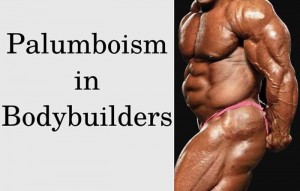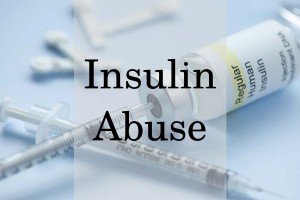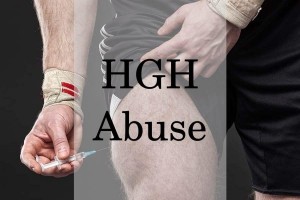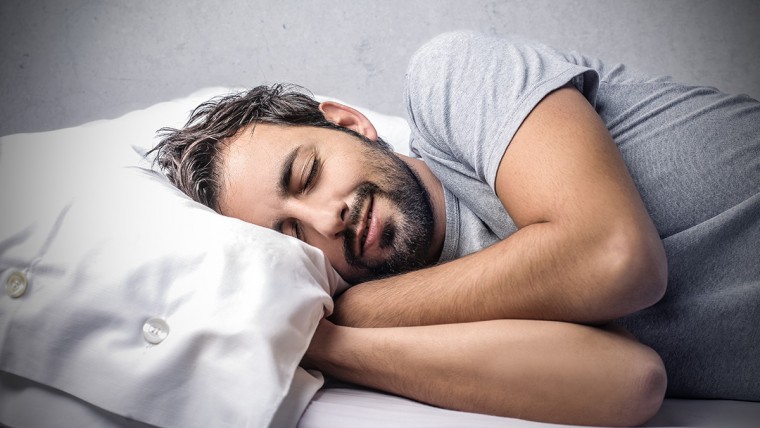In this article
HGH gut, also known as roid gut (or bubble gut) is a rare condition that affects primarily bodybuilders who abuse performance-enhancing drugs (PEDs).
It is also called palumboism, named after Dave Palumbo – the first bodybuilder with this problem.
HGH gut mostly occurs in professional bodybuilders for the last 30 years, which is likely related to the relatively recent addition of growth hormone in bodybuilding stacks.
Keep in mind, that if you are using legally prescribed HGH injections to treat growth hormone deficiency (GHD) or another medical condition, then there is no risk of developing palumboism.
But if you are abusing HGH for non-medical purposes, GH gut is one of the many risks to consider.
What is HGH gut?
HGH gut is caused by severe abdominal distention, which leads to a protruding belly and a bloated appearance. The abs are visible and well-defined due to the low amount of subcutaneous fat, but the midsection appears as if the stomach and intestines are severely bloated.
However, palumboism does not occur during regular medical therapy with HGH. Thus, any data we have about HGH gut is from anecdotal cases of PED abuse amongst bodybuilders and there are no scientific studies to shed more light on the condition.
It is unknown whether the abdominal distention in the case of an HGH belly can lead to health problems or it is simply an aesthetic issue.
Apart from HGH abuse, there are case studies of abdominal distension, dilated stomach, and enlarged duodenum (first part of the small intestine) in patients with hypersomatotropism.
That is a condition of excess growth hormone, usually produced by a pituitary tumor. It is also called acromegaly due to the typical changes in hands, feet, face, and skin that occur.
Thus, excessive levels of HGH are likely the underprint for the development of abdominal distension.
How do bodybuilders get palumboism?
Palumboism is almost exclusively seen in bodybuilders. The use of PEDs in bodybuilding has been quite popular since the discovery of anabolic-androgenic steroids (AAS) in the 1930s.
Since the 90s, other hormones such as HGH and insulin have been added to the steroid stacks of bodybuilders. That led to the occurrence of HGH gut among some of the competitors, such as Dave Palumbo after whom palumboism is named.
Bodybuilders typically abuse HGH by applying high doses of the growth hormone for prolonged periods. They also combine it with other anabolic drugs such as insulin and AAS which further increase the risk of side effects, one of which is HGH gut.
4 main causes of HGH gut
Currently, there is a lack of scientific evidence on the exact etiology of palumboism. However, the condition is strongly related to the abuse of anabolic agents.
Bodybuilding stacks that contain HGH seem to pose the highest risk. Growth hormone injections are often combined with insulin, testosterone, and other AAS in order to gain as much muscle mass as possible.
Combining different hormonal medications, taking them in excessive doses, and following extreme dietary regimes can lead to multiple side effects and further increase the risk of developing a GH gut.
Insulin abuse
Insulin is a highly anabolic hormone that bodybuilders often abuse in an attempt to increase muscle recovery and hypertrophy.
It’s usually taken after a workout when insulin sensitivity is the highest. Insulin increases the transport of amino acids to the muscle which is the main substrate for hypertrophy.
It must be injected right before a large meal rich in carbohydrates in order to quickly replenish the muscle glycogen stores and boost recovery after the training session.
The risk of hypoglycemia forces bodybuilders to consume enormous amounts of food, which leads to distention and enlargement of the stomach. This might contribute to the development of a roid gut.
Furthermore, insulin has an anabolic effect on the metabolism of fats. But contrary to popular belief, animal and human studies reveal that insulin injections do not lead to excess accumulation of fat around internal organs (visceral fat).
Besides, bodybuilders with palumboism have protruding bellies even when their body fat is extremely low such as during a contest.
Anabolic steroid misuse
Bodybuilders misuse AAS such as testosterone due to the anabolic effect on muscle and catabolic effect on fat tissue. However, legally prescribed testosterone therapy is not a steroid and has many differences in efficacy and safety.
Steroids can stimulate growth in all skeletal muscles past the point of what is considered the normal genetic limit for hypertrophy.
That can also affect the muscles of the core, causing a roid gut. Apart from rectus abdominis – commonly referred to as “six-packs”, there are larger abdominal muscles underneath and on the sides of the abs. These include the transverse abdominal muscle and the oblique muscles.
As these muscles grow thicker beyond what is naturally achievable, they may further contribute to a bulging appearance of the midsection in bodybuilders.
HGH abuse
HGH is abused due to its anabolic effects on most tissues and organs, including skeletal muscle. Simultaneously it stimulates the breakdown of fat around the abdomen and internal organs.
Growth hormone abuse contributes to abdominal distention most likely by causing gastrointestinal overgrowth.
Bodybuilders who abuse HGH injections apply significantly higher doses than what is normally recommended. For most legal HGH products, the upper recommended dosage is 1-2 mg (3-6IU) per day.
According to unconfirmed evidence, bodybuilders may take anywhere between 3-10 mg (9-30IU) per day, in addition to steroid cycles and insulin.
Animal studies report that the application of high doses of HGH increases the weight and length of the small intestine and causes 50–100% greater mucosal mass in rats.
Thus, HGH abuse can increase the risk of a bloated stomach and intestines which contributes to abdominal distention.
Currently, there are no studies on how long it would take for palumboism to occur. According to anecdotes, it may take years of HGH abuse.
Extreme HGH doses can also lead to other side effects, such as:
- Severe water-retention
- Edema in the lower limbs
- Headache
- Carpal tunnel syndrome
- Insulin resistance
- Tremors or shaking
- Nausea and cold sweats
High-calorie diet
Bodybuilders often consume large meals which may contain up to several thousand calories. Consuming large portions of food may play a role in abdominal distention, mainly due to the stretching effects on the stomach.
However, there is no evidence to support such a hypothesis.
The increased caloric intake is the main factor contributing to weight gain. Thus, bodybuilders tend to overeat during the offseason in an attempt to pack on as much muscle as possible.
According to evidence, gaining more muscle mass also leads to an increase in organ size.
Considering the fact that professional bodybuilders often have 50-60kg extra muscle than what is naturally attainable, they might experience significant organ enlargement. This might be a contributor to the HGH gut.
Carbohydrate loading and water manipulation are common bodybuilding practices that are not likely to contribute to palumboism.
Can you get rid of HGH gut?
As evident from the current body shape of retired bodybuilders, GH gut is a largely reversible condition. In order to reverse it, the abuse of HGH and other PEDs should be stopped.
Keep in mind that stopping cold turkey is not recommended. According to studies, growth hormone should be tapered off to reduce the psychological effects of withdrawal. When GH levels in the body return to normal levels, the tissues of the stomach and the intestines will shrink via hypotrophy.
A simple way to avoid HGH gut
If you do not abuse multiple PEDs including HGH, insulin, and steroids then you are not at risk to develop palumboism. Professional athletes commonly abuse PEDs in an attempt to stay competitive and perform at a world-class level.
However, the substances can lead to serious health risks, which are not worth the trade-off for a better, more aesthetic, or bulkier physique.
On the other side, natural bodybuilders are not likely to grow roid guts regardless of their diet or workout regime.
Also, GH gut does not occur in GHD patients who use legal treatment. Legal HGH therapy aims to achieve normal GH levels in patients, which means that they won’t experience any kind of abdominal distention.
Besides, treatment is prescribed and monitored by a doctor, who controls the dosage and ensures its safety.
If you’re currently on HGH therapy disregard any recommendations unless given by your doctor.











